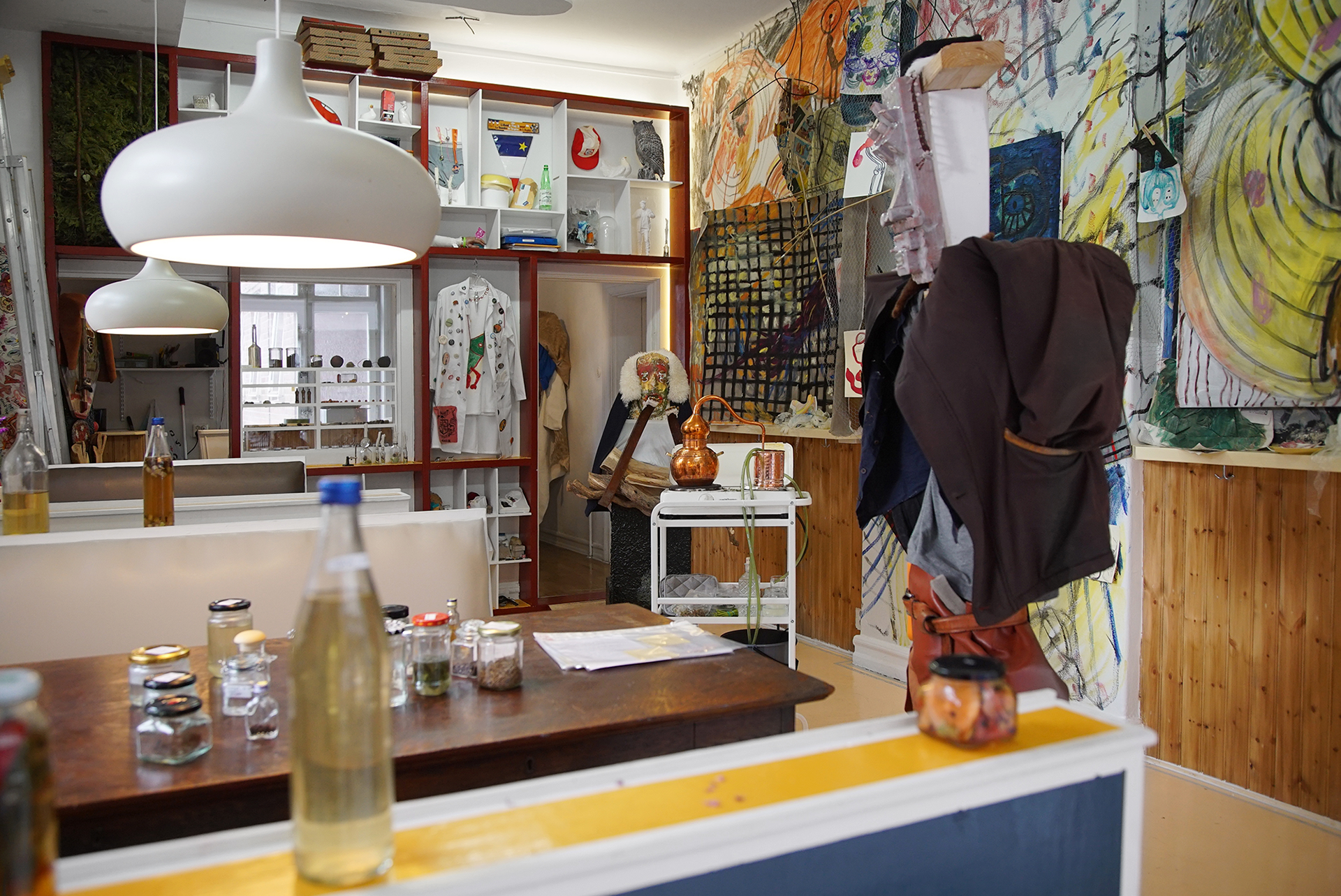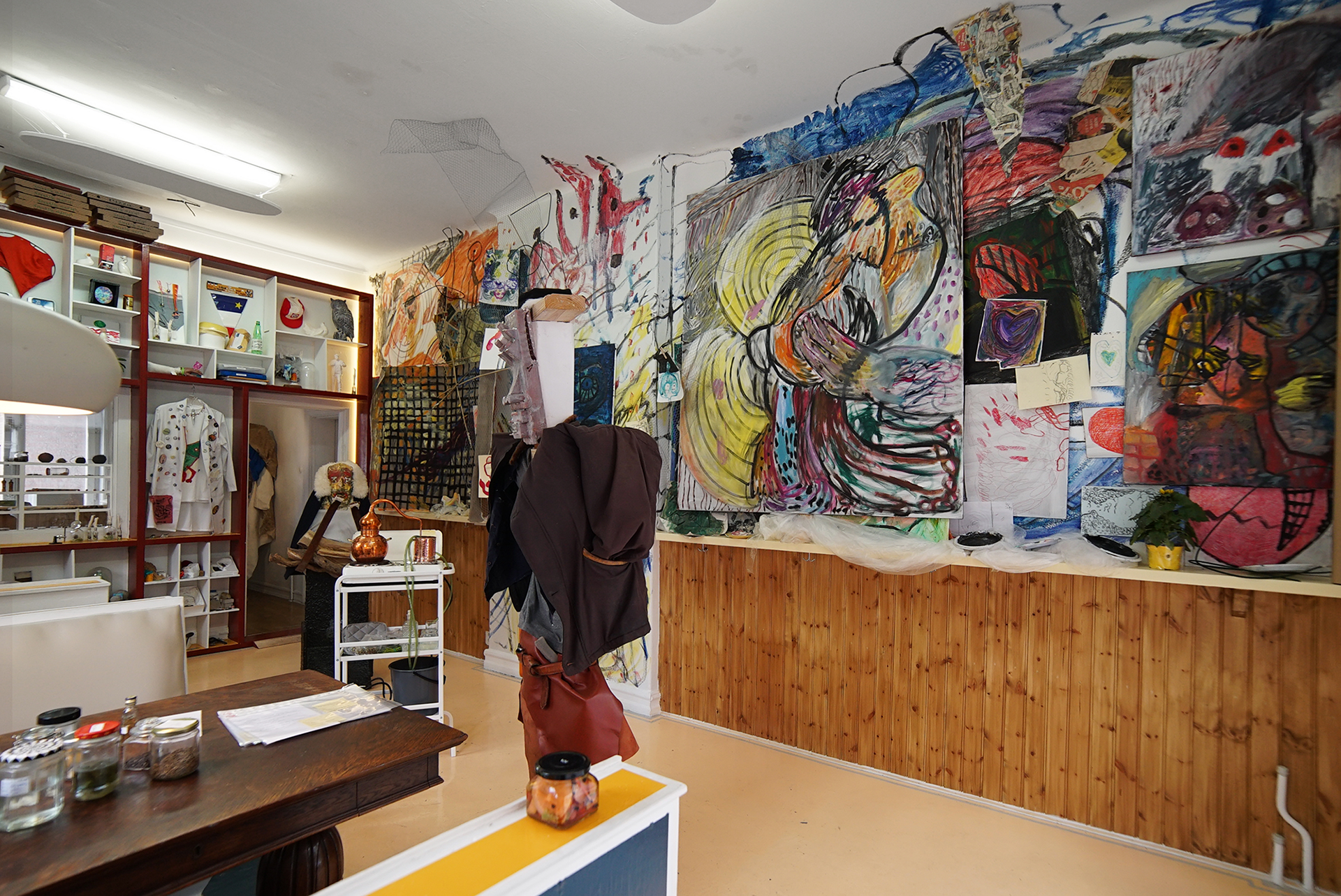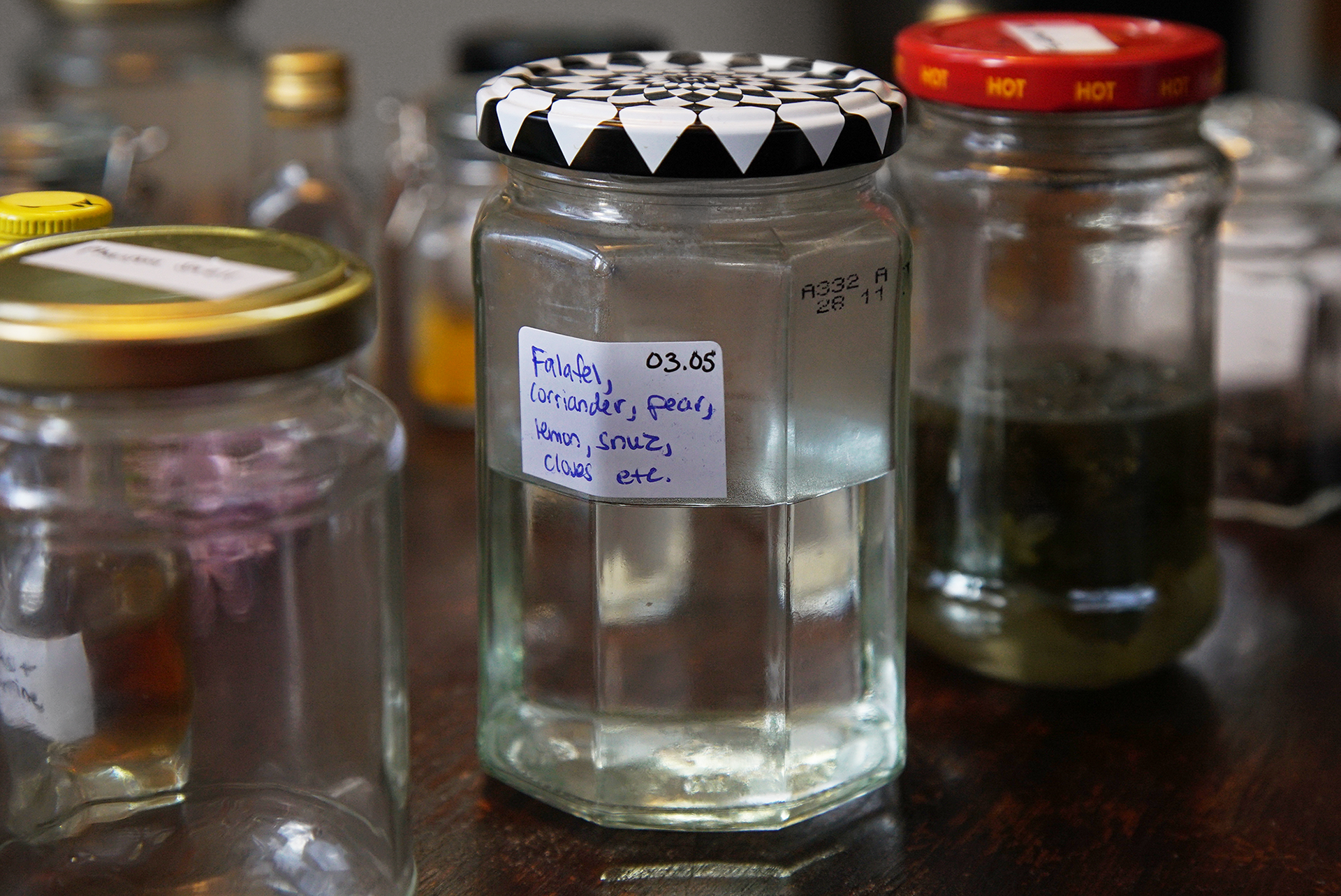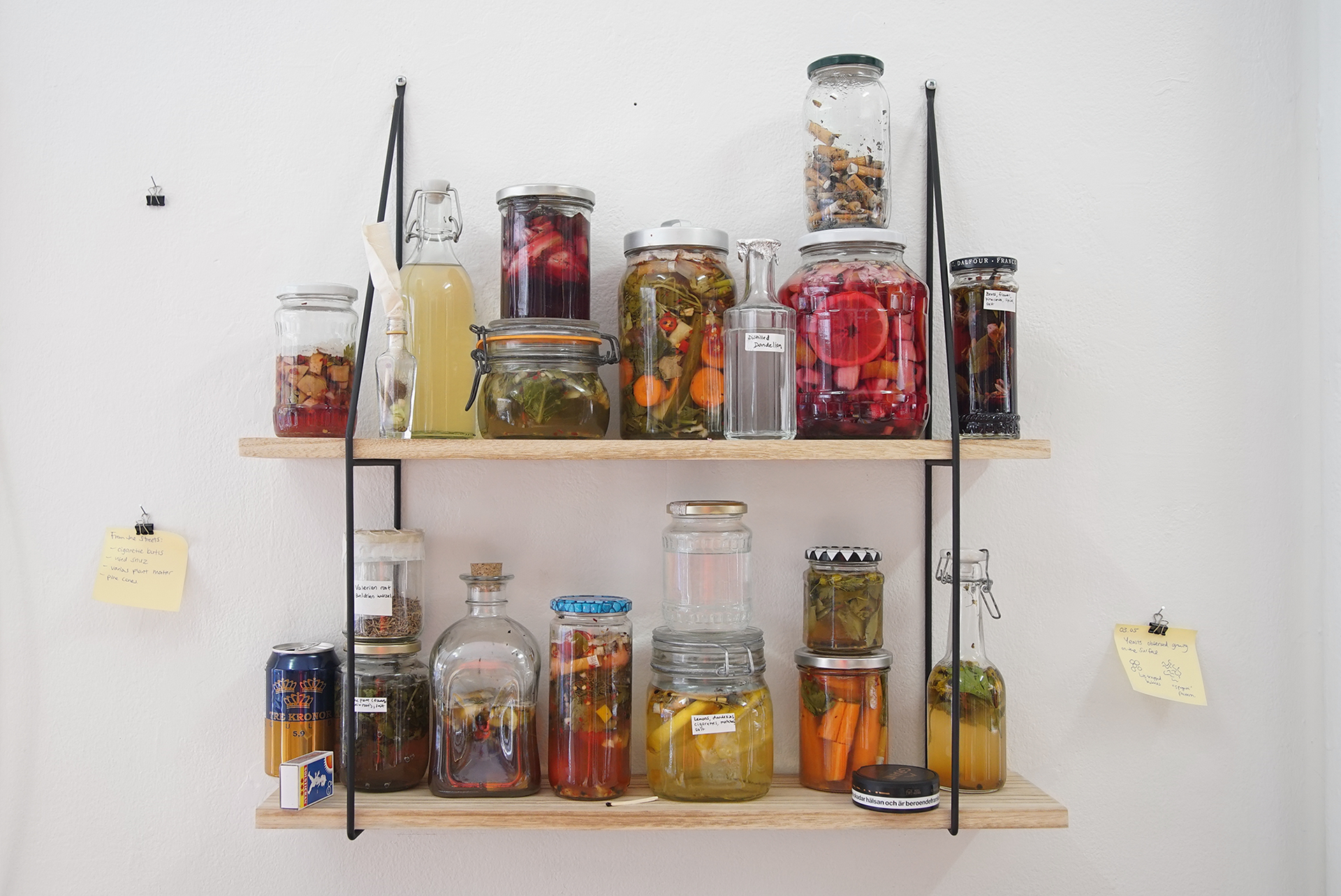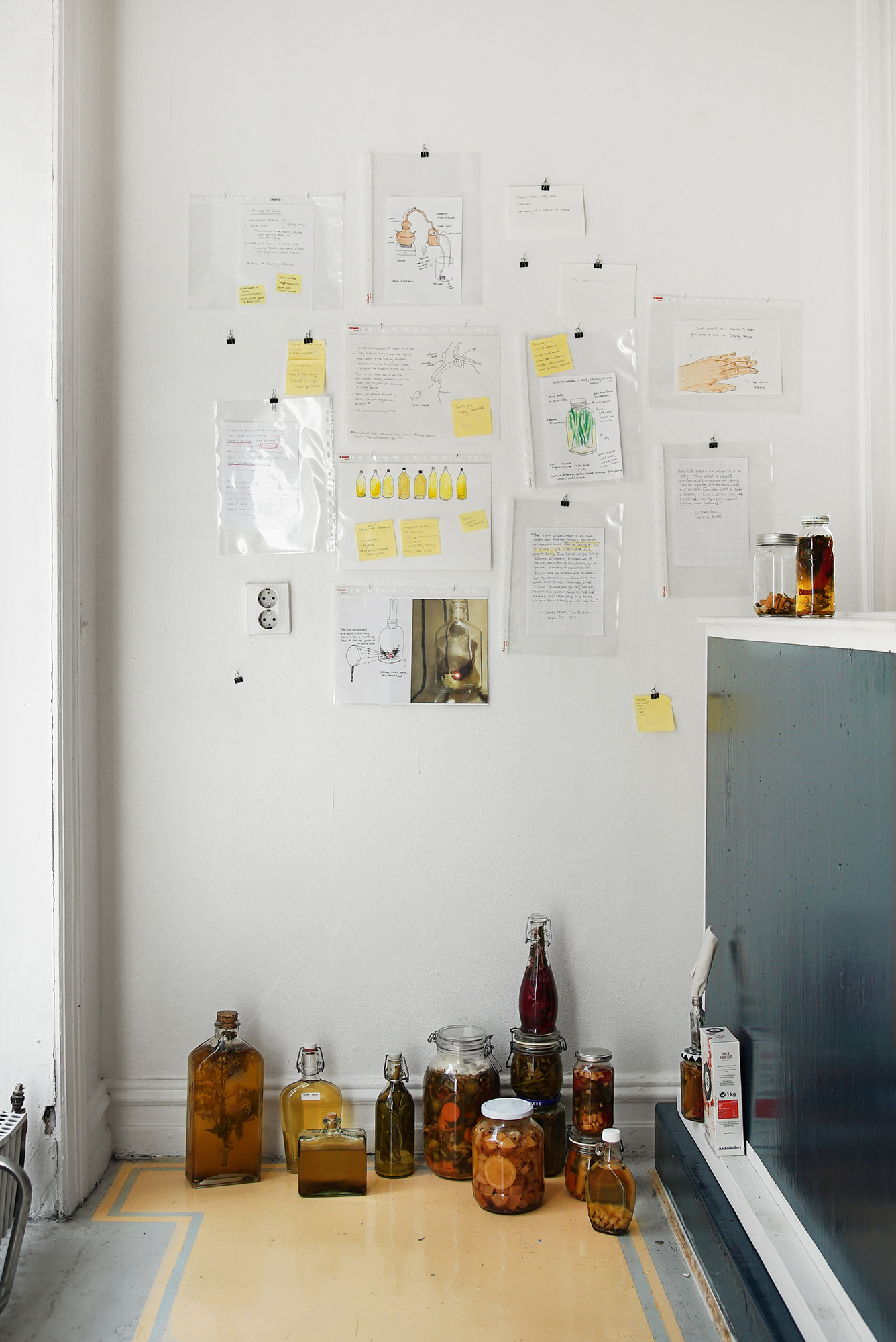Gather Here Together
May 4 - June2, 2019
For Chapter 2 of Whose Museum’s year-long exhibition at KRETS, the art collective has invited Alanna Lynch and Maria Wæhrens, two artists working from different traditions but who have in common the method of gathering and combining materials into sprawling installations that implicate the feminist notion of taking up space. Here, together with the Whose Museum collection and work by Max Ockborn (from Chapter 1), our exhibition continues to grow as visitors also donate new items to the collection.
Alanna Lynch’s work reflects positions from art and science with a focus on the fear of contagion, aiming to balance feelings of disgust with an aesthetics of care. In her research-based installations, she connects living organisms, social justice themes, and performance. Her recent work involves smells, body fluids, bacteria, and swarms of insects. In Gather Here Together, Lynch presents research and processes with smells: DIY stink bombs, fermented substances and distilled scents from the surrounding neighbourhood. Lynch is drawn to smells for their ability to resist containment and cross boundaries, using them to engage in theoretical discussions about power, identity and the movement of bodies. Though it is well known that smells can evoke strong emotions associated with personal memories, the artist demonstrates that their potency is also evidence of their ability to dominate space and influence human thoughts and behaviour.
Taking the body and painting as her initial points of departure, Maria Wæhrens works from a queer perspective in an open and expressive manner. She confronts societal expectations and power structures that impact lived experiences in terms of gender and sexuality, overlapping personal experiences with her artistic process. These structures and patterns are challenged by her working method, as raw gestures and emotions are allowed to flow into unedited expressions. At Whose Museum, Wæhrens presents a direct-to-wall painting installation that combines items from her domestic sphere and studio, including new paintings and drawings, alongside contributions made by her loved ones. Behind the expressive chaos of the installation lies a system of organisation that is concealed but suggested – attempts at self-care are embedded in the work which transfers personal memories, emotions and thoughts into the artist’s own internal logic in painting.
ABOUT WHOSE MUSEUM:
Whose Museum began in Canada in 2008 with the simple premise that anyone could donate anything to the collection. It started with a few drawings, some trash, objects and ephemera, gathering up in a suitcase in the back of a van. Attempts to order and contain it were futile. Strange things started to happen; the database crashed, storage boxes fell apart, items transformed into new objects, traded places, disappeared. The collection had become a body and active member of the collective. Whose Museum is now a loose archival network involving an assemblage of people, places, times, artworks, objects, texts and exhibitions.
Whose Museum began in Canada in 2008 with the simple premise that anyone could donate anything to the collection. It started with a few drawings, some trash, objects and ephemera, gathering up in a suitcase in the back of a van. Attempts to order and contain it were futile. Strange things started to happen; the database crashed, storage boxes fell apart, items transformed into new objects, traded places, disappeared. The collection had become a body and active member of the collective. Whose Museum is now a loose archival network involving an assemblage of people, places, times, artworks, objects, texts and exhibitions.
Supported by the Culture Department of Malmö and the Swedish Arts Council
Photos: Lena Bergendahl













